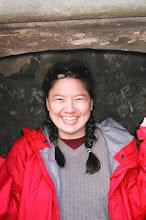The 7 Most Exciting Moments in Science...according to Discover Magazine
One of science’s most well loved stories is that of Archimedes, fresh from discovering the principle of buoyancy during a bath, running naked through the streets of Syracuse yelling “Eureka!” (“I have found it!”) Unfortunately, the story, told for the first time two centuries after Archimedes’ death, is hogwash. Myths like this one sometimes make it seem that science moves along in a series of epiphanies, hopping from one transcendent moment to another.
In reality, science generally pushes forward with all the alacrity of tectonic plates, painstakingly testing and disproving theories until new laws emerge. But sometimes, very rarely, science really does take a great leap forward. Here are the seven most exciting and important moments in the entire history of science:
7 Scientists worked like mad at the turn of the 20th century trying to determine how nerve cells transmit messages. Otto Loewi had heard of an obscure theory that they communicated by releasing pulses of chemicals, but hadn’t thought about it for decades until one night in 1920. He dreamed of an experiment involving the still-beating hearts of frogs that would test this theory. He woke up, took copious notes, and returned blissfully to sleep. In the morning, he found the notes illegible, the insight vanished. Fortunately, the dream made a repeat appearance the next night, and this time Loewi sprang out of bed and rushed to the laboratory to begin the experiments that helped confirm the chemical transmission of nerve impulses.

René Descartes
Image courtesy of
Library of Congress
6 Young René Descartes was a sickly child. To shore up his health, he was allowed to sleep until 11 o’clock every morning, a habit he maintained throughout his adult life. During one of these mornings abed, Descartes watched a fly flit across the ceiling. He realized he could describe the fly’s movements and its location by measuring its distance from two perpendicular walls. A formalized version of this fly-tracking technique became the Cartesian coordinate system of perpendicular lines and planes.

Nikola Tesla
Image courtesy of
Library of Congress
5 The direct current generator that ran the first power plant in the 1870s blinded the world with science, but Nikola Tesla remained underwhelmed: It was inefficient and broke down easily. While strolling through a Budapest park in 1882 as the sun was sinking, Tesla pondered this dilemma. He recited a stanza from his favorite play, Faust, in which a scientist trades his soul for knowledge. Tesla’s prodigious brain, possibly desperate to find a new topic, conjured up the design for a reliable and efficient alternating current motor. Tesla started sketching plans with a stick for the benefit of his walking partner.

Edwin Hubble
Image courtesy of
NASA
4 Long before we had the Hubble Telescope, astronomers were puzzled about the nature of nebulae: odd, faint stars that sometimes looked like spirals. Some scientists, proponents of the island universe theory, suggested they were galaxies—distinct clusters of stars—millions of light-years away. Opponents claimed they must be some new sort of star within our own galaxy. Edwin Hubble solved the entire puzzle from a California hilltop in 1923. He examined a famous smudge of light named Andromeda, and noticed that it resolved to a cluster of discrete stars, proving the existence of galaxies other than the Milky Way.
3 Robert Hooke contributed to fields as diverse as astronomy, architecture, paleontology, and physics, but his most important accomplishment was in biology. In 1665, he built his own compound microscope and began exploring. When he peered through its lenses at a thin slice of corkwood, he saw infinitesimal rectangles that reminded him of monks’ cells. Hooke thereby discovered biological cells, the fundamental unit of all organisms.
2 In 1896, physicist Henri Becquerel was fascinated by the recently discovered X-ray. He thought that naturally fluorescent minerals produced X-rays after prolonged exposure to sunlight. To test his theory, he let mineral samples soak up the sun and then wrapped them in black cloth with a photographic plate, expecting the resulting X-rays to create weak images. On a February day too overcast to work, Becquerel wrapped up a plate with a sample of uranium and left it in a drawer for the next few days. By the time he opened the bundle, the uranium had burned its own image on the film, as clear as if it had been exposed to bright sunlight. Something in the rock released more energy than weak phosphorescence could explain. Upon further investigation, he and Marie and Pierre Curie discovered that that something was radioactivity.

Alexander Flemming
Image courtesy of
the USDA
1 In 1928, Alexander Fleming had the archetypal eureka moment—and unlike the tale of Archimedes, this one’s true. Believing that there was a substance in snot that worked as an antibiotic, he smeared a set of Petri dishes with bacteria and his own special Fleming phlegm, and left the dishes while he took a two-week vacation. When he returned, the mucus had not killed any of the bacteria, but mold had drifted in from a nearby lab and contaminated one dish. All the bacteria close to the mold were dead. Closer examination of the mold showed that it was producing a chemical—penicillin—that killed the bacteria.
As with any top-whatever list, picking the best eureka moments is a judgment call; from where we’re sitting it seems that Fleming’s discovery was truly a momentous event, that Newton probably didn’t get pelted in the head with an apple, and that Descartes most likely did lie in bed and watch flies (it was, after all, the 17th century).


No comments:
Post a Comment